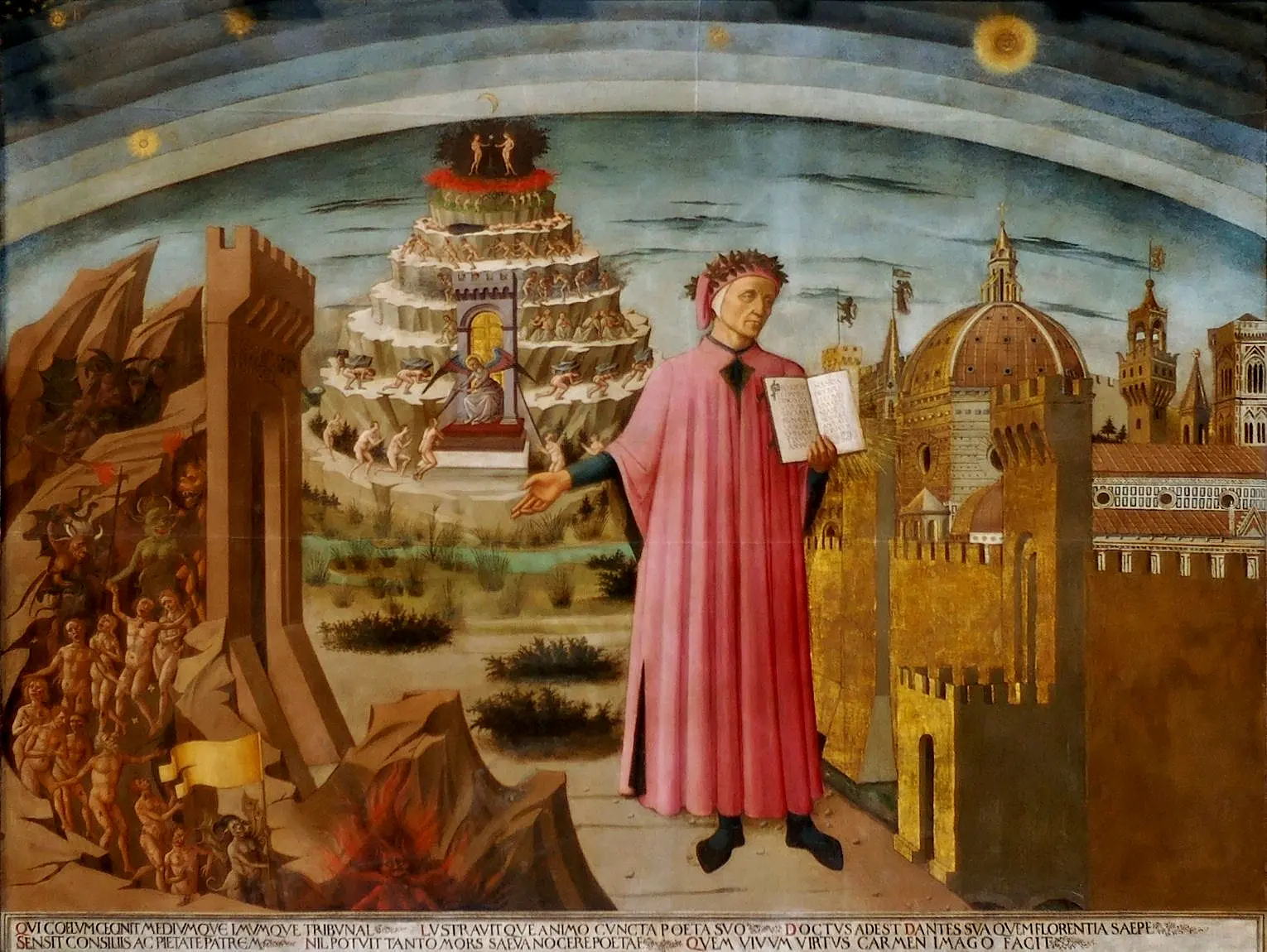Ciao, seekers of epic tales and eternal truths! Few literary works have shaped history like Dante Alighieri’s Divine Comedy. This iconic epic takes readers on a transformative journey through Hell, Purgatory, and Paradise, combining stunning imagery with profound insights into human nature. Let’s dive into the masterpiece that defines Dante’s genius and Florence’s cultural soul.
What Is the Divine Comedy?
The Divine Comedy is a three-part epic that begins with Dante, guided by the poet Virgil, exploring the fiery depths of Inferno (Hell). In Purgatorio (Purgatory), he journeys upward through repentance and renewal, eventually reaching Paradiso (Paradise), guided by his beloved Beatrice. Written during Dante’s exile, the poem reflects his longing for Florence, his critique of corruption, and his vision of divine justice. Its universal themes resonate as deeply today as they did in the 14th century.
Florence’s Connection to the Divine Comedy
Dante’s Florence is alive in the Divine Comedy. Many of the poem’s characters – both heroes and villains – are drawn from the city’s political and social life. For example:
- Farinata degli Uberti, a Ghibelline leader, appears in Inferno for his heretical views.
- Beatrice, Dante’s muse, embodies divine love and guides him in Paradise.
- The Baptistery of St. John, where Dante was baptized, is lovingly mentioned as “my beautiful San Giovanni.”
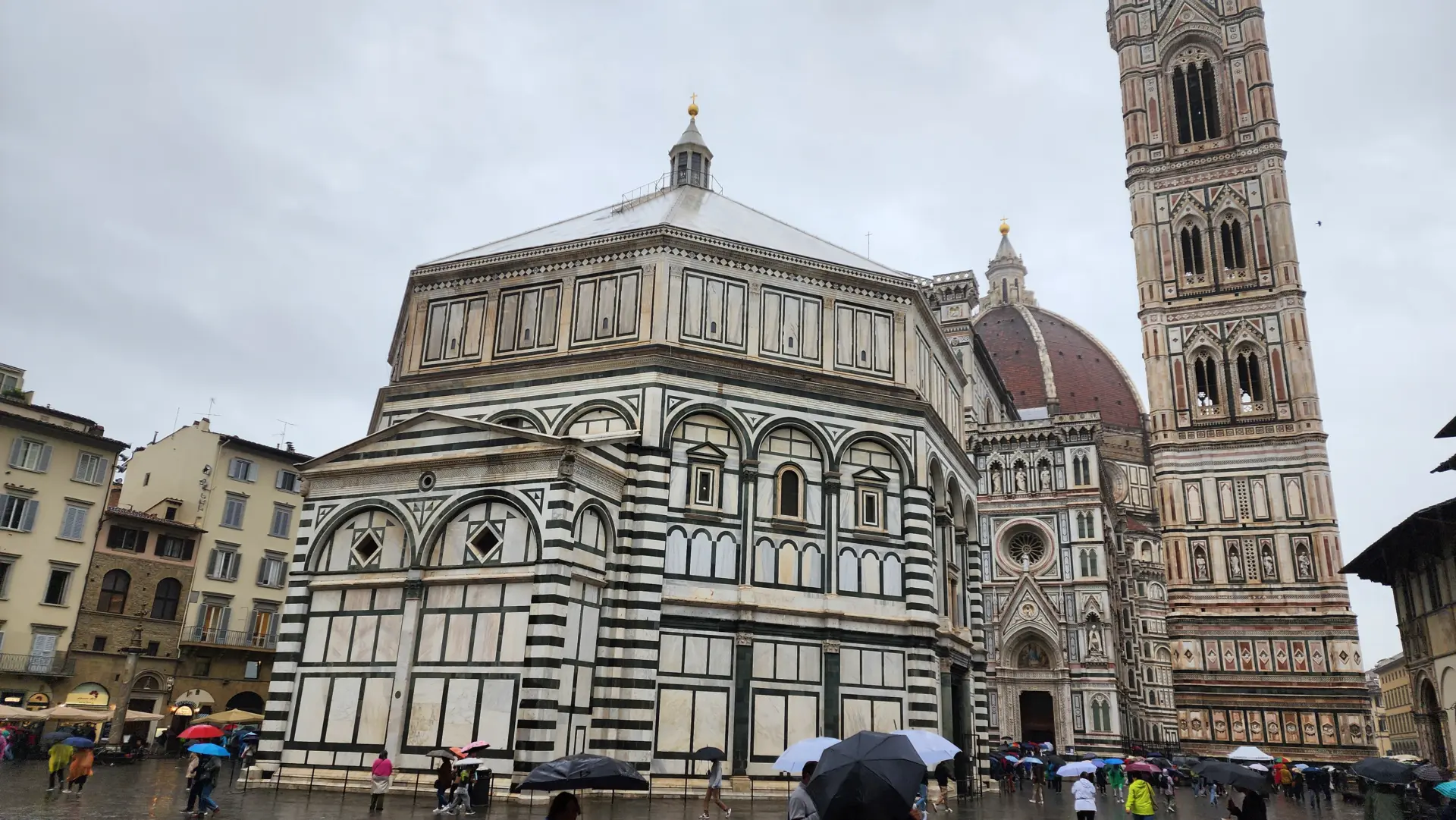
Cultural Impact
The Divine Comedy is not merely a poem – it’s a cultural phenomenon that has inspired art, literature, and philosophy for centuries. Dante’s vivid descriptions of Hell, Purgatory, and Paradise have been visualized by some of history’s greatest artists, including:
- Botticelli, whose intricate illustrations capture the otherworldly imagery of the poem.
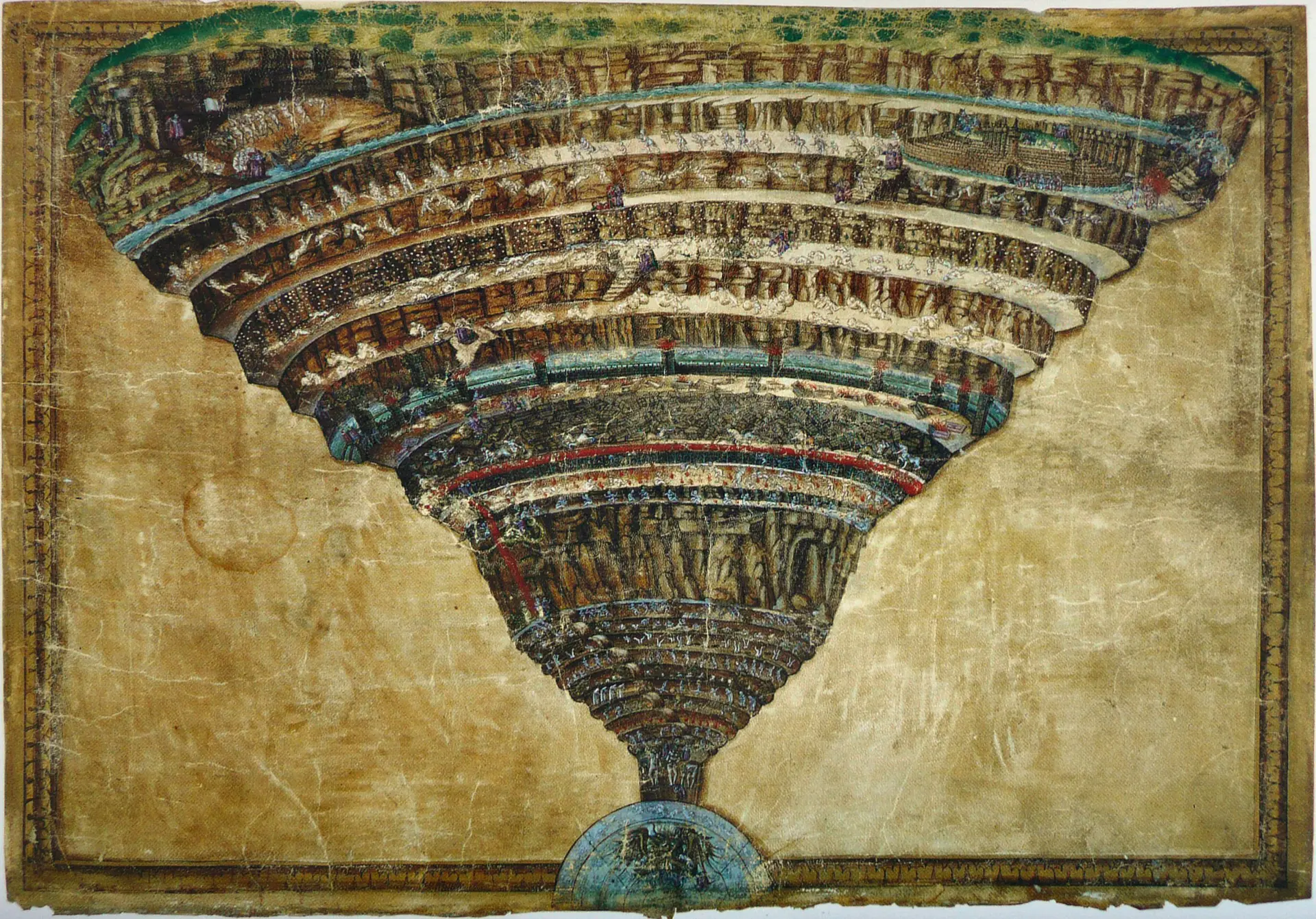
- Gustave Doré, whose dramatic engravings bring Dante’s journey to life with striking detail.
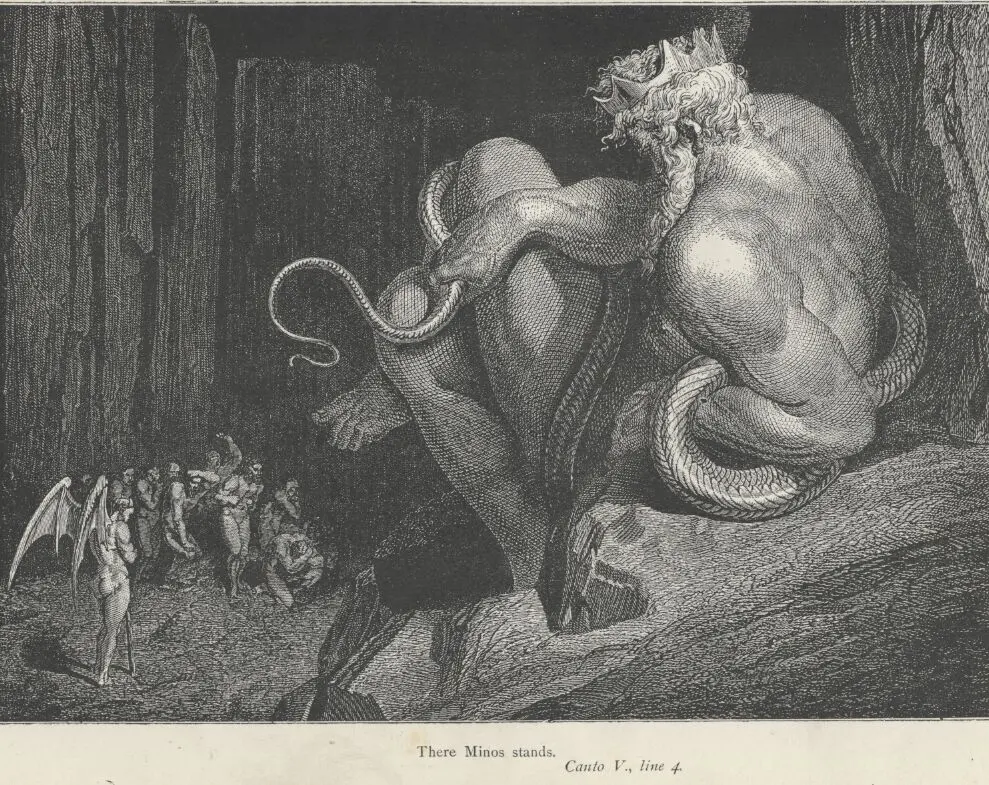
- Rodin, whose monumental sculpture, The Gates of Hell, draws directly from Dante’s Inferno.
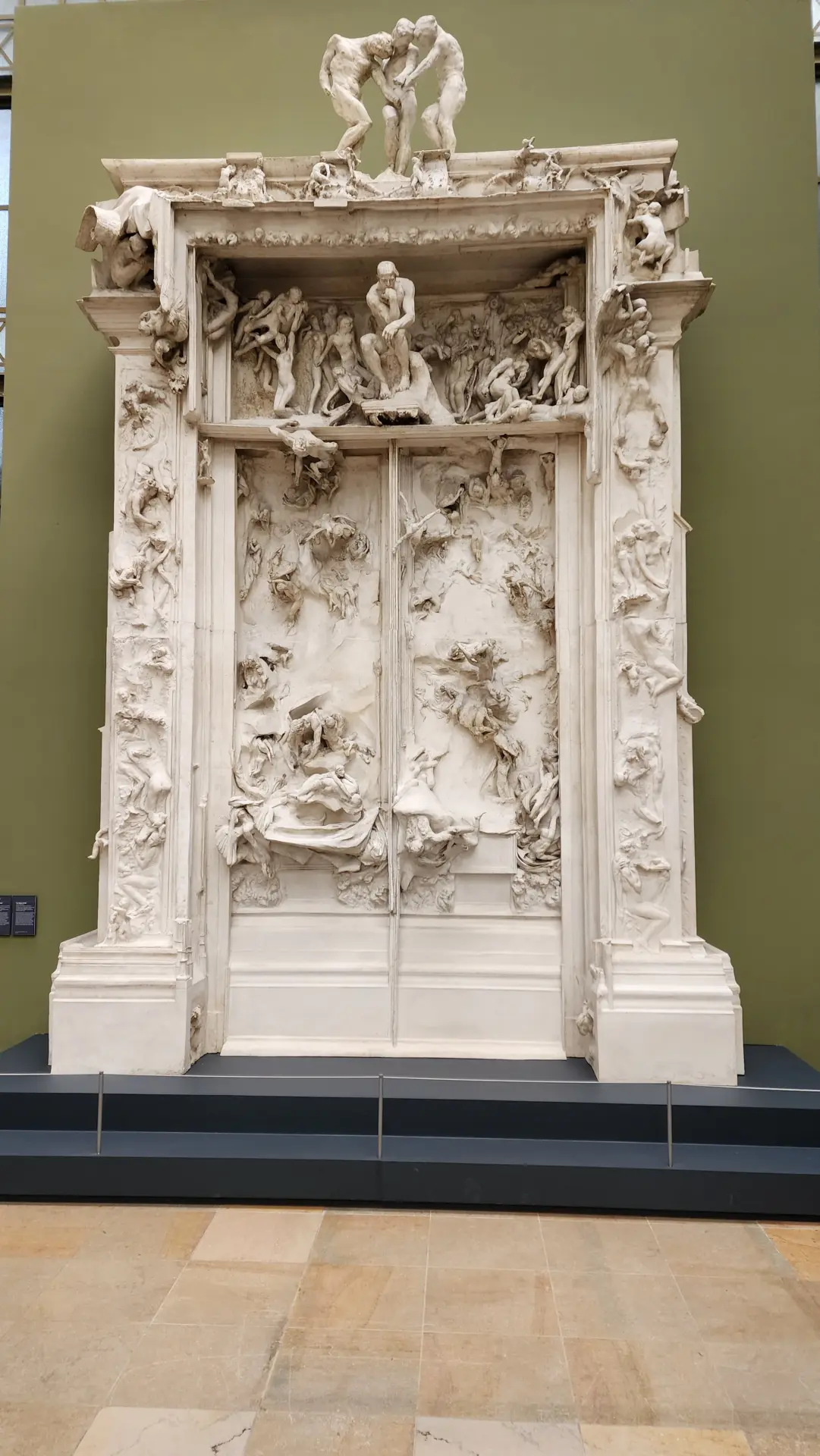
In literature, the Divine Comedy has shaped works as diverse as John Milton’s Paradise Lost and T.S. Eliot’s The Waste Land. Philosophically, Dante’s exploration of morality and divine justice has sparked discussions across the centuries, influencing theologians and thinkers worldwide.
Modern adaptations of the poem abound, from operas and plays to films and video games, making Dante’s work accessible to new generations. In Florence, The Divine Comedy continues to inspire art, with exhibitions, performances, and installations celebrating Dante’s vision.
Practical Tips for Exploring the Divine Comedy in Florence
- Dante’s Church: Visit Chiesa di Santa Margherita dei Cerchi. According to tradition, this is where Dante first saw Beatrice Portinari, the love of his life and muse for The Divine Comedy. What makes this church even more special are the letters left by visitors at Beatrice’s shrine. Tucked into a small basket by her portrait, these heartfelt messages often ask for guidance in love or express gratitude for inspiration. It’s a touching tradition that turns this unassuming church into a modern-day sanctuary for those seeking hope, connection, or a little romantic magic.
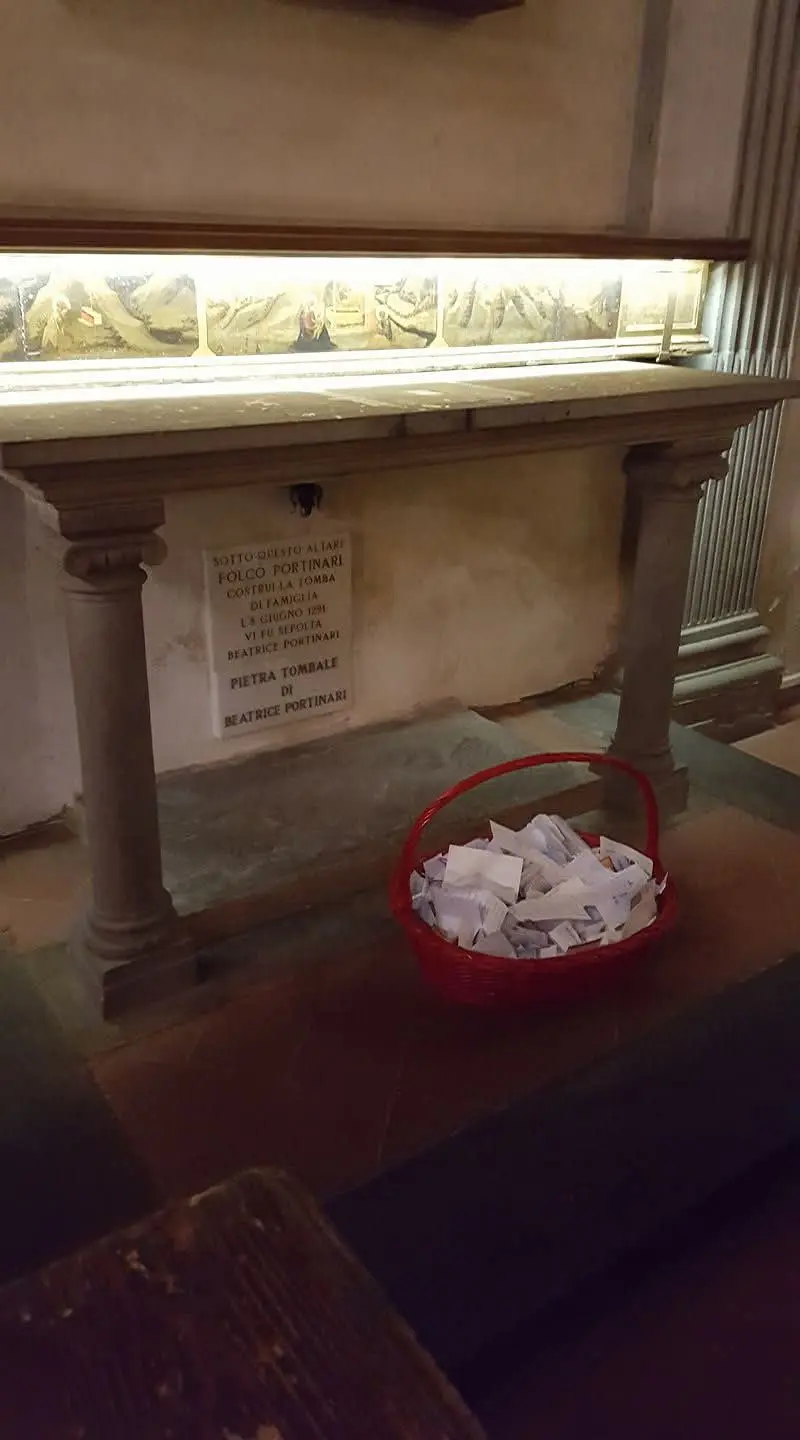
- The Baptistery of St. John: Admire the place Dante described so poetically.
- Follow the Plaque Trail: Discover the lines of the Divine Comedy etched into Florence’s streets.
Final Thoughts
Dante’s Divine Comedy isn’t just a literary journey – it’s a reflection of Florence’s spirit and its place in the world. Walking through the city, you’ll feel the poem come alive in its streets, landmarks, and eternal charm.
Until next time, keep exploring and embracing the epic! ✨
Xoxo,
Bubbly 🎈

